
Flash Boys: A Wall Street Revolt
by
Michael Lewis
Published 30 Mar 2014
—Omar Little CONTENTS INTRODUCTION WINDOWS ON THE WORLD CHAPTER 1 HIDDEN IN PLAIN SIGHT CHAPTER 2 BRAD’S PROBLEM CHAPTER 3 RONAN’S PROBLEM CHAPTER 4 TRACKING THE PREDATOR CHAPTER 5 PUTTING A FACE ON HFT CHAPTER 6 HOW TO TAKE BILLIONS FROM WALL STREET CHAPTER 7 AN ARMY OF ONE CHAPTER 8 THE SPIDER AND THE FLY EPILOGUE RIDING THE WALL STREET TRAIL Acknowledgments INTRODUCTION WINDOWS ON THE WORLD I suppose this book started when I first heard the story of Sergey Aleynikov, the Russian computer programmer who had worked for Goldman Sachs and then, in the summer of 2009, after he’d quit his job, was arrested by the FBI and charged by the United States government with stealing Goldman Sachs’s computer code. I’d thought it strange, after the financial crisis, in which Goldman had played such an important role, that the only Goldman Sachs employee who had been charged with any sort of crime was the employee who had taken something from Goldman Sachs.
…
One of these people—a Canadian, of all things—stands at the picture’s center, organizing the many smaller pictures into a coherent whole. His willingness to throw open a window on the American financial world, and to show people what it has become, still takes my breath away. As does the Goldman high-frequency trading programmer arrested for stealing Goldman’s computer code. When he worked for Goldman Sachs, Sergey Aleynikov had a desk on the forty-second floor of One New York Plaza, the site of the old Salomon Brothers trading floor, two floors above the place I’d once watched the stock market crash. He hadn’t been any more interested in staying in that building than I had been and, in the summer of 2009, had left to seek his fortune elsewhere.
…
.” ** Those nine banks, in order of their (fairly evenly distributed) 2011 market share, from highest to lowest: Credit Suisse, Morgan Stanley, Bank of America, Merrill Lynch, Goldman Sachs, J.P. Morgan, Barclays, UBS, Citi, Deutsche Bank. †† Stampfli has not been charged with any wrongdoing. CHAPTER FIVE PUTTING A FACE ON HFT Sergey Aleynikov wasn’t the world’s most eager immigrant to America, or, for that matter, to Wall Street. He’d left Russia in 1990, the year after the fall of the Berlin Wall, but more in sadness than in hope. “When I was nineteen I haven’t imagined leaving it,” he says. “I was very patriotic about Russia. I cried when Brezhnev died.
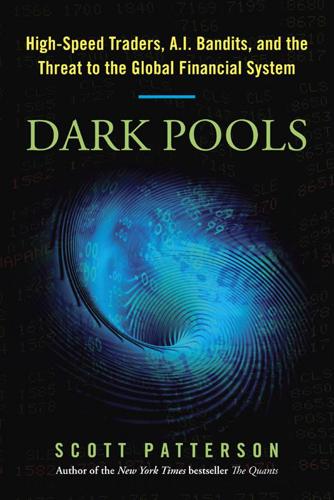
Dark Pools: The Rise of the Machine Traders and the Rigging of the U.S. Stock Market
by
Scott Patterson
Published 11 Jun 2012
Indeed, 2007 and 2008, a time when most of Wall Street was falling apart at the seams, would be the heyday for the Bots. That would all change in the summer of 2009. In a matter of days, the computer-driven world that Island had helped spawn would come under a giant microscope. CHAPTER NINETEEN THE PLATFORM From: Mikhail Malyshev Sent: 11:11 pm To: Sergey Aleynikov Re: let’s move fast It was nearing midnight as Sergey Aleynikov nervously clicked on the e-mail from his future boss. The subject line—“let’s move fast”—said it all. Mikhail “Misha” Malyshev wasn’t one to waste time. Speed was paramount, speed was everything. “There’s a huge amount of work ahead of us,” the e-mail said.
…
He was eager to get home to his wife, Elina, and their three little girls, all under the age of five. At 9:20 P.M., as he stepped off his plane at Newark Liberty International Airport, six agents from the FBI were waiting for him in the terminal. Special Agent Michael McSwain, a stocky man with a salt-and-pepper buzz cut, approached, flashing a badge. “Are you Sergey Aleynikov?” he asked in a raspy voice that seemed a dead-on impression of Clint Eastwood. “Yes?” “You’re under arrest.” “This must be a mistake,” Aleynikov said in a panic. ALEYNIKOV was handcuffed, packed into an unmarked car, and taken to the Justice Department’s Federal Plaza headquarters in downtown Manhattan.
…
They amounted to a reversal of the speed-freak frenzy that had hijacked the financial system in the past decade. It was time to slow things down. Was it enough? No one knew. IN the weeks and months following the events the media dubbed the Flash Crash, the fierce debate over what had become of the U.S. stock market that had erupted after the arrest of Sergey Aleynikov grew even more heated. Angry words were exchanged in the halls of Capitol Hill, on financial television shows, and in the backrooms of giant trading firms in New York and Chicago. Congress held panel discussions. The SEC grilled the previously unknown chieftains of the high-speed merchants—and their critics.

Flash Boys: Not So Fast: An Insider's Perspective on High-Frequency Trading
by
Peter Kovac
Published 10 Dec 2014
Flash Boys: Not So Fast An Insider’s Perspective on High-Frequency Trading Peter Kovac Directissima Press flashboys.not.so.fast@gmail.com Table of Contents Preface: What This Is and Why Introduction: The Dangers of Speed Chapter 1: Spread Networks and The Value of Speed Chapter 2: The Education of Brad Katsuyama Chapter 3: Trying to Connect the Dots Chapter 4: There’s Another Explanation, But It’s Not As Interesting Chapter 5: Sergey Aleynikov Chapter 6: How To Take Billions From Wall Street Chapter 7: IEX Launches Chapter 8: My Dinner with Sergey Epilogue Summing It Up Preface: What This Is and Why In the past few months many people have asked me to explain Michael Lewis’ recent book, Flash Boys. The topic is quite complex, and naturally people want to know if the U.S. stock market is actually rigged, as the book claims.
…
Regulators can demand this information from any broker at any time – no lengthy court process or subpoena is required. The data does exist, and lots of it. Oddly, in later chapters Lewis reveals some knowledge of the vast amounts of data available to investigators: John Schwall complains about his brokerage firm recording his email; Sergey Aleynikov talks about using a source control system called subversion, which records each and every change to the computer code used for trading. In fact, every single evening, every single broker-dealer registered with FINRA uploads a record of every single stock order they placed that day, complete with the millisecond that they sent it.[37] That’s worth repeating, because it’s rather remarkable.
…
It’s a good thing. Personally, I’d be more worried about the hedge funds that ultimately fund Katsuyama’s dark pool, who have virtually no regulator oversight. What do Scott Rothstein, Arthur Nadel, and Bernie Madoff have in common? Serving as hedge fund managers, and serving time in jail. Chapter 5: Sergey Aleynikov There’s not too much to add to this chapter, as (a) it mostly focuses on a single individual, and (b) it’s largely a reprint of Lewis’ September 2013 article, which benefitted from Vanity Fair’s fact-checking team. Goldman overreacted. They wanted to send a message to programmers everywhere, and they did: steal code, go to prison.
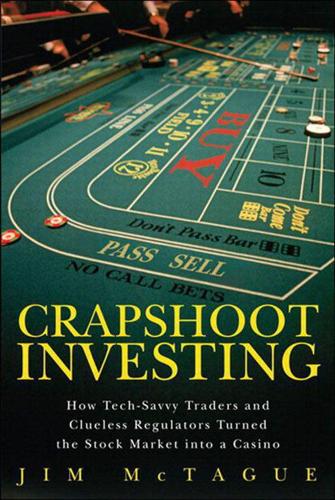
Crapshoot Investing: How Tech-Savvy Traders and Clueless Regulators Turned the Stock Market Into a Casino
by
Jim McTague
Published 1 Mar 2011
Senator Ted Kaufman, “Unusual Market Activity: The SEC and High-Frequency Trading,” May 13, 2010, The Huffington Post. 6. Securities and Exchange Commission, 17 CFR Parts 200, 201, 230, 240, 242, 249, and 270 [Release No. 34-51808; File No. S7-10-04] RIN 3235-AJ18, Regulation NMS, page 19. 3. Screaming Headlines Sergey Aleynikov, a thin, amicable, 40-year-old naturalized citizen from Russia with a Richard-the-Lionhearted beard, thick black eyebrows, and a full head of thick black hair, had a nasty surprise waiting for him at Newark, New Jersey’s Liberty International Airport when he returned there from a job interview in Chicago on July 3, 2009.
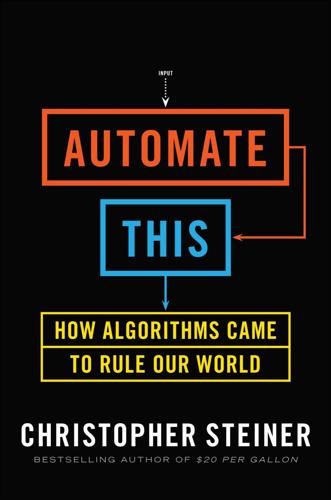
Automate This: How Algorithms Came to Rule Our World
by
Christopher Steiner
Published 29 Aug 2012
Ingfei Chen, “Scientist at Work: Nick Patterson,” New York Times, December 12, 2006. CHAPTER 8: WALL STREET VERSUS SILICON VALLEY 1. Rana Foroohar, “Wall Street: Aiding the Economic Recovery, or Strangling It?” Time, April 4, 2011. 2. While building his team at Teza, Malyshev recruited a Goldman Sachs programmer, Sergey Aleynikov, by offering to triple his $400,000 salary to $1.2 million. Aleynikov agreed to come over and made a hasty move to Chicago. A day after he began working at Teza, Aleynikov was arrested on charges that he had stolen computer code from Goldman. During his last three days of work at Goldman, Aleynikov had systematically uploaded big chunks of Goldman’s trading code to a server in Germany.
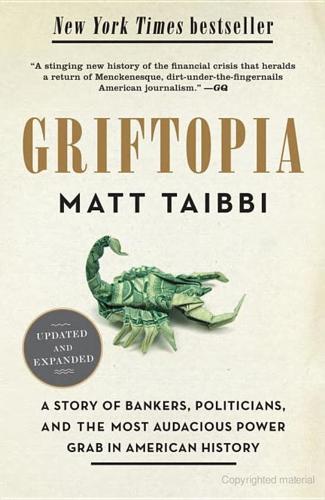
Griftopia: Bubble Machines, Vampire Squids, and the Long Con That Is Breaking America
by
Matt Taibbi
Published 15 Feb 2010
The NYSE memo reads: The purpose of this Information Memo is to advise all member organizations that the New York Stock Exchange LLC (“NYSE”) will be decommissioning the requirement to report program trading activity via the Daily Program Trading Report (“DPTR”), which was previously approved by the Securities and Exchange Commission (the “Commission”). The Zero Hedge war on Goldman became legend when his seemingly far-fetched conspiracy theories came sensationally true that summer. That’s when a Russian Goldman employee named Sergey Aleynikov was alleged to have stolen the bank’s computerized trading code. Aleynikov worked at precisely the desk Zero Hedge had accused of being involved in large-scale manipulations. And indeed, in a court proceeding after Aleynikov’s arrest, Assistant U.S. Attorney Joseph Facciponti reported that “the bank has raised the possibility that there is a danger that somebody who knew how to use this program could use it to manipulate markets in unfair ways.”

Broken Markets: How High Frequency Trading and Predatory Practices on Wall Street Are Destroying Investor Confidence and Your Portfolio
by
Sal Arnuk
and
Joseph Saluzzi
Published 21 May 2012
It does not cost pennies; it costs them quarters, and it ferociously distorts the price discovery process. How the World Began to Learn About HFT While HFT has been steadily expanding since the millennium and exponentially since the implementation of the SEC’s Reg NMS in 2007, it stayed out of the mainstream media until mid-2009. Over the July 4 weekend, Sergey Aleynikov was arrested by the FBI at Newark Airport for stealing code from his prior employer, Goldman Sachs, and trying to bring it to his new job as an HFT programmer at Teza Technologies, where he was set to triple his $400,000 salary. According to Assistant U.S. Attorney Joseph Facciponti, Goldman raised the alarm that “somebody who knew how to use this program could use it to manipulate markets in unfair ways.”11 Aleynikov was found guilty under the Economic Espionage Act in December 2010 and began serving an eight-year sentence at a federal prison.

Economists and the Powerful
by
Norbert Haring
,
Norbert H. Ring
and
Niall Douglas
Published 30 Sep 2012
They estimated that German retail investors paid a whopping €28 billion to banks, investment fund managers and insurers in 2007 for managing their savings, amounting to between a quarter and a third of the investment proceeds (CapQM 2009). A Reuters news report points at another troublesome issue. In July 2009, Sergey Aleynikov, a US and Russian national, was arrested on charges of theft just after he left his job as a programmer at Goldman Sachs. He had copied the trading program of the firm, on which he had been working, and transferred it to a server in Germany. What makes this case interesting is the warning that prosecutor Joseph Faccioponte issued based on information from Goldman Sachs.
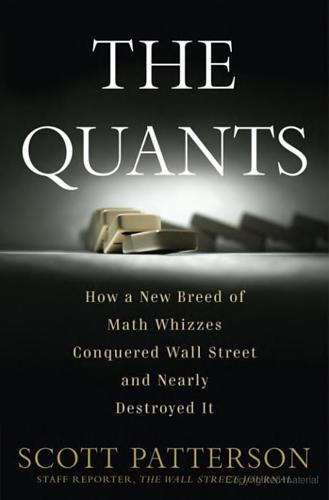
The Quants
by
Scott Patterson
Published 2 Feb 2010
While high-frequency firms were in many ways beneficial for the market, making it easier for investors to buy and sell stocks since there always seemed to be a high-frequency player willing to take the other side of a trade, the concern was that a rogue fund with poor risk-management practices could trigger a destabilizing sell-off. “We consider this dangerous,” said one executive for a company that provided services to high-frequency trading firms. “My concern is that the next LTCM problem will happen in less than five minutes.” The world of high-frequency trading leapt into the media spotlight in July 2009 when Sergey Aleynikov, a quant who’d just quit a job writing code for Goldman Sachs, stepped off a plane at Newark Liberty Airport after a trip to Chicago. Waiting for him at the airport were FBI agents. Aleynikov was arrested and charged with stealing code from Goldman’s secretive high-frequency trading group, a charge he fought in court.